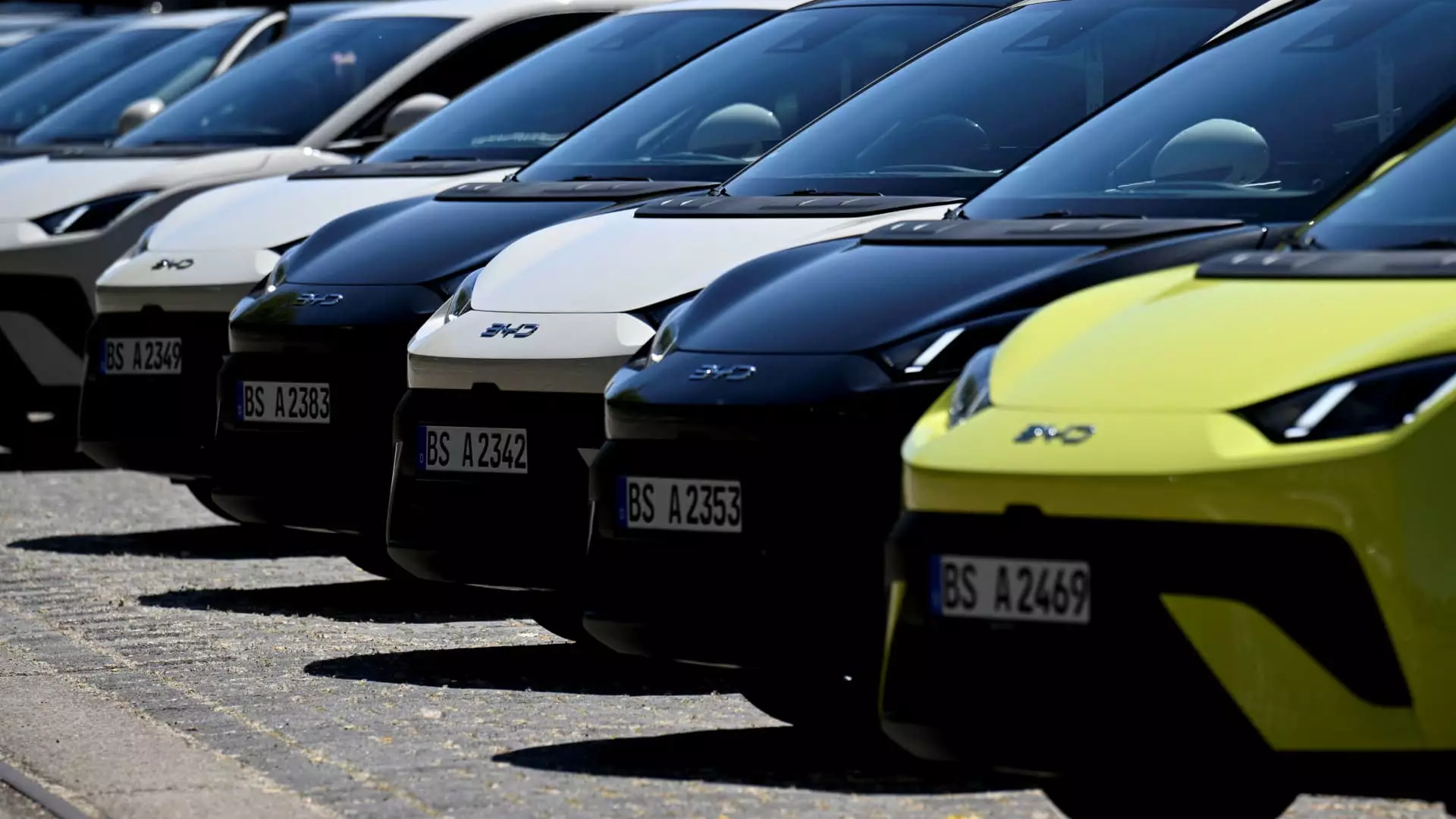China’s electric vehicle (EV) market is undergoing a tumultuous price war that is reshaping the automotive landscape. With established giants like BYD and Tesla grappling for dominance, the overall climate appears to tilt precariously toward excessive competition. As Tesla reported a striking 15% decline in sales within just one month, the situation becomes starkly evident: even market leaders are not immune to the pressures of rapid change. The contrast is glaring, especially when positioned against BYD’s 14% sales boost, albeit fueled by steep discounts. This scenario raises profound questions about the sustainability of such steep price cuts and their implications for both consumer welfare and corporate health.
The Impregnable Rise of BYD Amidst Peril
While BYD has managed to capture more market volume, its current strategy hinges on slashing prices to halt any decline in growth. Analysts predict that the company’s trajectory may not maintain its momentum, as it is still struggling to meet sales targets. Such reactions indicate a reactive rather than a proactive stance in a market that is becoming increasingly volatile. Surprisingly, this price-slashing frenzy might be an oxymoronic strategy—a short-term solution that could threaten long-term stability.
In this age of rapid technological advancements, it’s essential for such companies to find innovative ways to compete without resorting to dilutive pricing strategies. Instead of playing a dangerous game of discounting, BYD should focus on enhancing its value proposition through technology, sustainability, and superior customer experience. Ultimately, creating a genuine connection with consumers may yield more significant long-term benefits than temporary price wars.
Geely’s Strategic Position in Turbulent Waters
Geely emerges as a notable player, with analysts hailing it as well-positioned due to its diversified portfolio that appeals to consumers. In the midst of chaotic price competition, Geely has managed to target BYD’s popular range with superior specifications at lower prices. This highlights a crucial aspect of modern competition: the ability to adapt and innovate rather than merely cut prices. As Geely rolls out new models, the emphasis should remain on the optimal alignment of technology and customer demand.
In an industry under rapid transformation, Geely’s approach signifies a sober understanding of market mechanics. This is especially impressed upon by its tailored strategy for various consumer segments, engaging buyers with a cohesive blend of advanced features and affordability. As the pace of innovation accelerates, competing solely on price might be a shortcut to mediocrity rather than a pathway to lasting success.
Xpeng’s Rising Star: Focus on Quality Over Quantity
Amidst all these fluctuations, Xpeng stands out as an intriguing case. The company has consistently increased its delivery numbers, launching new models and leveraging cutting-edge technologies. Its emphasis on developing advanced driver assistance systems reflects a more sustainable approach to gaining market share. Instead of entering the price war, Xpeng seems intent on prioritizing quality and innovation—an approach that could resonate deeply with buyers wary of getting less value for their money.
While some may perceive Xpeng’s strategies as aggressive, they can indeed be reflective of a more thoughtful long-term vision. Instead of leading with price cuts, Xpeng showcases a viable blueprint for success that centers on responding to consumer needs with premium offerings. In a rapidly evolving marketplace, this mindset could prove prophetic.
The Stability of Lesser-Known Contenders
Interestingly, companies like Leapmotor and Li Auto—often overlooked in the major discourse—are stabilizing amidst this price volatility. Leapmotor, despite reporting losses, has carved out a stable market share. In contrast, Li Auto has upheld profitability, primarily through its innovative business model that incorporates both electric and hybrid options. Their success underlines a key insight: companies that balance ambition with prudence and financial acuity can weather storms more effectively.
The reality remains stark; a hyper-competitive landscape can be destabilizing, but it also offers the profound opportunity to redefine how companies operate. Rather than running in circles, these emerging players showcase a necessary resilience and innovative spirit that could catalyze change throughout the industry.
Global Implications and the Future of EVs
The ongoing tensions within China’s EV market also pose significant implications for international players. With increased tariffs and potential repercussions for the influx of low-cost vehicles into Europe, the dynamics of global competition are coming into play. The marketplace doesn’t merely exist in isolation; as countries respond to the risk of flooding markets with subpar vehicles, the geopolitical landscape of automotive manufacturing is shifting.
In an environment marked by an excess of production capacity, the future undoubtedly hinges on more than just competitive pricing. Companies must learn to navigate a labyrinth of consumer expectations, geopolitical pressures, and technological disruptions. It is through continuous innovation, strategic positioning, and an unwavering commitment to quality that the key players will ultimately emerge from this chaotic era as champions, rather than casualties, of the EV revolution.

